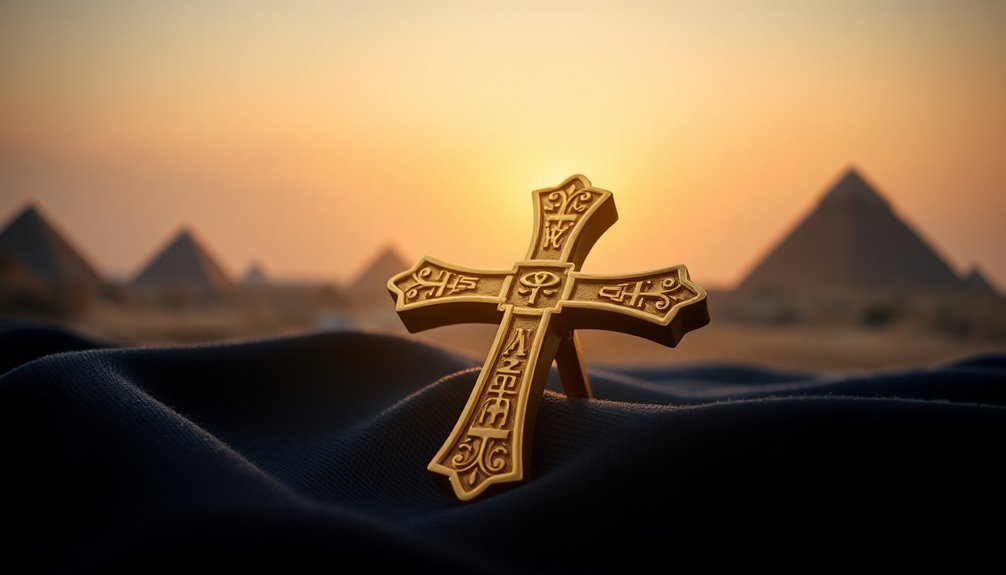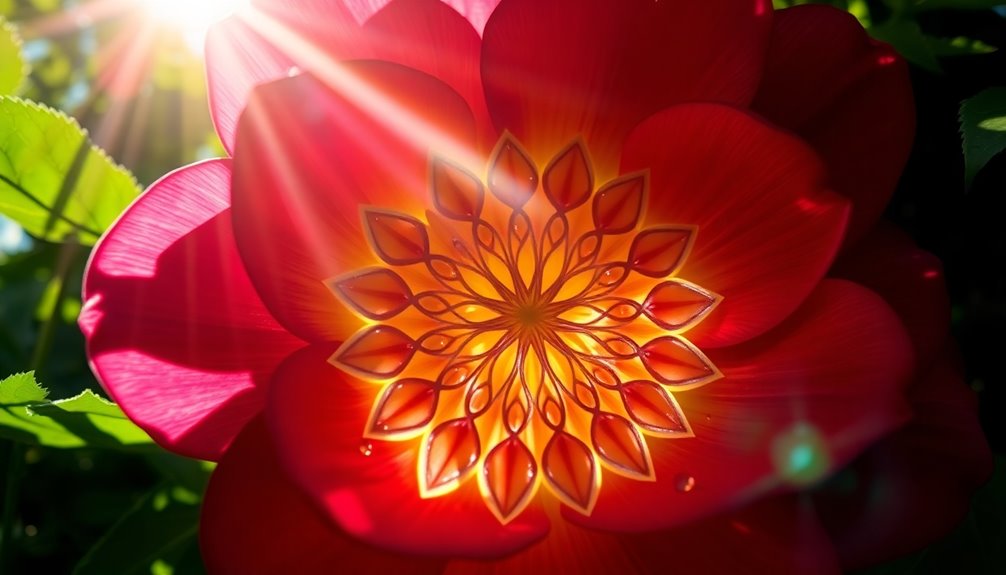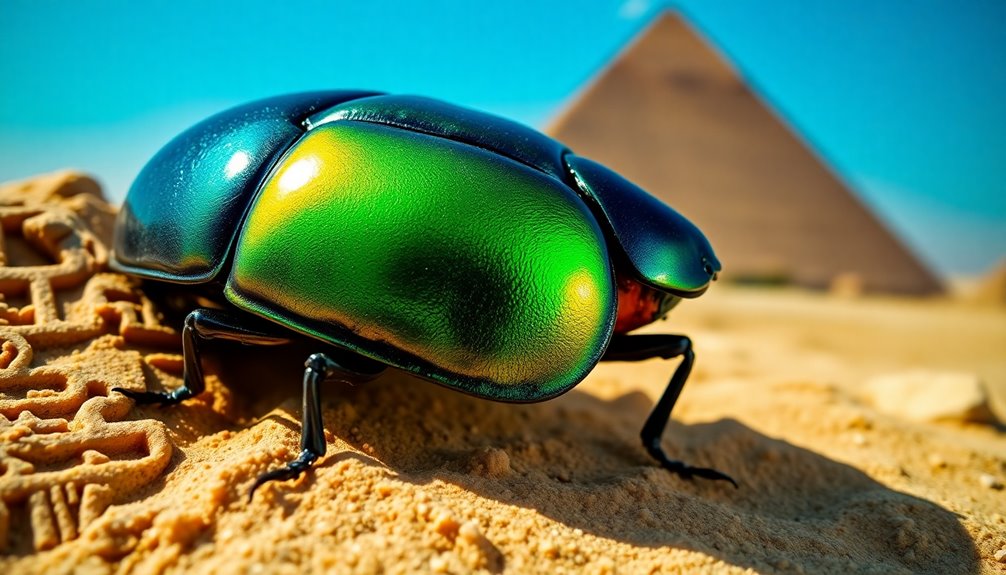The Egyptian cross, or Ankh, symbolizes eternal life and unity between the physical and spiritual dimensions. This ancient key represents creation and the life-giving force linked to deities like Osiris and Isis. Its protective energy has historically provided safe passage for the deceased and continues to resonate in modern spiritual practices. Many embrace the Ankh for transformation and introspection, incorporating it into rituals or wearing it as a talisman. By connecting with the Ankh, you invite deeper insights and personal growth. Keep exploring to uncover the rich layers of meaning that the Ankh can reveal in your life.
Key Takeaways
- The Ankh symbolizes eternal existence and serves as a reminder of the unity between physical and spiritual realms.
- It represents life-giving forces, embodying creation and fertility, linking to the nurturing aspects of the Nile.
- Historically, the Ankh acted as a key to the afterlife, ensuring safe passage for the deceased and symbolizing immortality.
- In modern contexts, wearing the Ankh can foster spiritual connection and transformation, acting as a protective talisman.
- The Ankh encourages introspection and deeper contemplation, making it a powerful tool for personal growth and spiritual journeys.
Ankh Symbolism and Significance
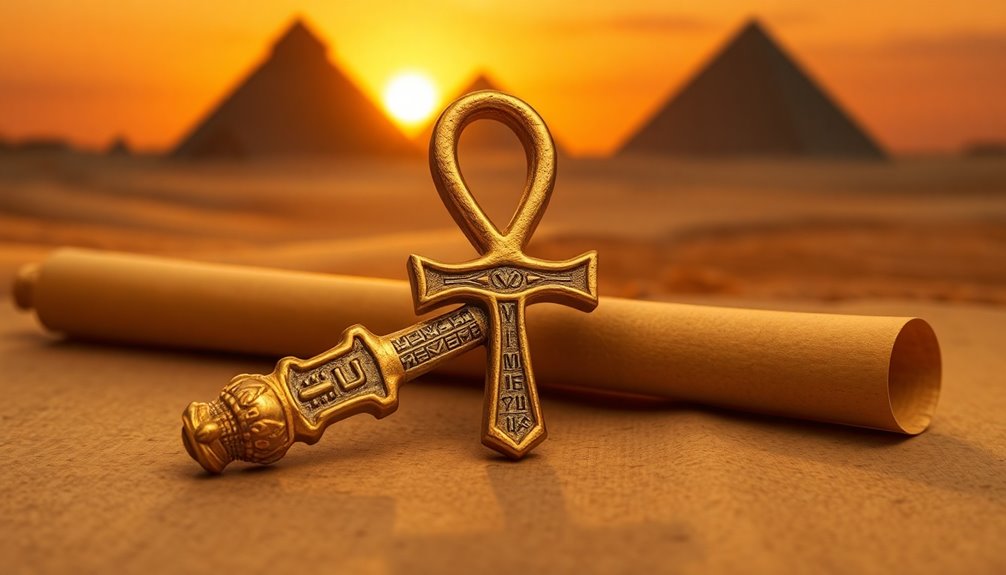
Understanding the Ankh's symbolism reveals its profound significance in ancient Egyptian culture. This iconic symbol, often referred to as the "Key of Life," embodies concepts of eternal existence, reflecting the ancient Egyptians' beliefs in life, death, and rebirth.
Its unique design—a T-shaped cross topped with a loop—represents the unity of the physical and spiritual domains, illustrating how interconnected these worlds are.
The Ankh's association with gods emphasizes its role as a life-giving force. Frequently depicted in the hands of deities, it signifies their power to bestow life and guarantee fertility. This connection to fertility isn't just symbolic; the shape of the Ankh itself resembles reproductive organs, highlighting the importance of creation in Egyptian culture.
Moreover, the Ankh played a vital role in funerary practices, acting as a protective talisman for the deceased. By carrying this symbol, ancient Egyptians believed they could secure safe passage to the afterlife, reinforcing the concept of immortality.
Historical Origins of the Ankh
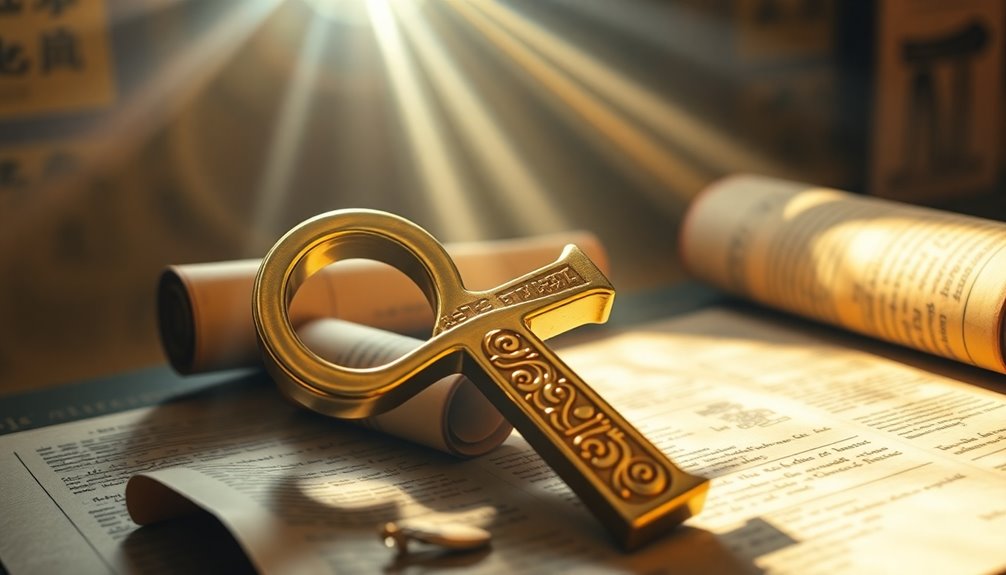
The Ankh's rich symbolism has roots that trace back to the Early Dynastic Period of ancient Egypt, around 3150-2613 BCE. This powerful symbol emerged as a representation of life and immortality, deeply embedded in ancient Egyptian beliefs.
The Ankh was often connected to the gods and goddesses, featured prominently in art and artifacts, signifying divine power and protection. Its design, a combination of a T-cross and a loop, reflects the culture's concepts of life, representing the union of male and female principles, which highlights their views on creation and fertility.
The Ankh symbol served as a key of life, believed to grant the deceased safe passage to the afterlife during funerary practices.
You might notice the Ankh on various artifacts and jewelry from ancient Egypt, showcasing its significance in religious and cultural contexts throughout millennia.
These beliefs and practices surrounding the Ankh illustrate how essential this symbol was to the ancient Egyptian worldview, serving both as a representation of the divine and as a crucial tool for understanding life, death, and what lies beyond.
Ankh in Egyptian Mythology
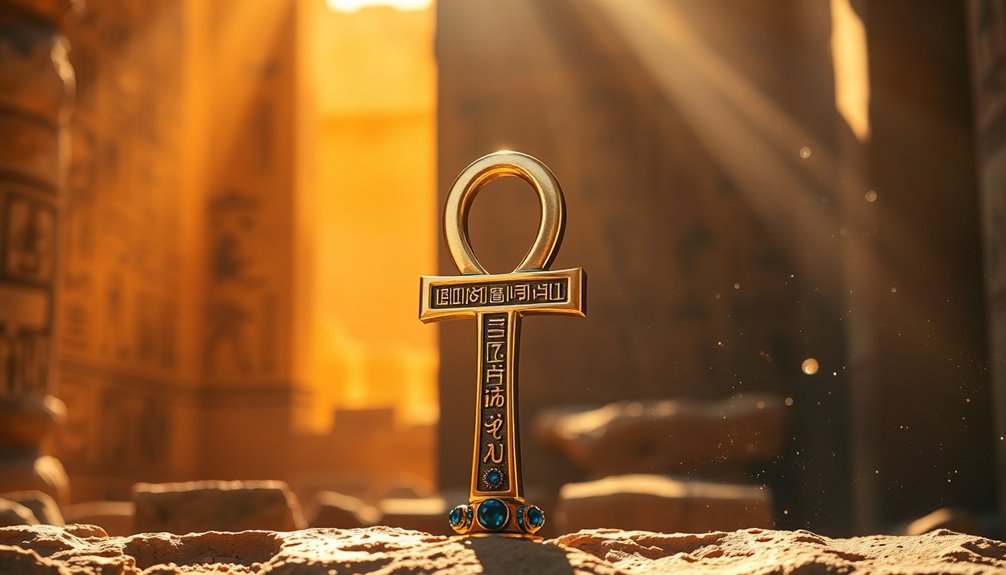
In ancient Egyptian mythology, the Ankh stands as a powerful symbol of life and creation, intricately linked to the divine union of the gods Osiris and Isis. This sacred emblem conveys profound meanings, representing fertility and the gift of life itself.
You'll often find the Ankh depicted in the hands of deities, showcasing their role as life-givers and their mastery over mortality and the afterlife.
Imagine the following vivid images associated with the Ankh:
- The vibrant Nile, overflowing with life-giving floods, nurturing the fertile land.
- Osiris and Isis entwined, embodying the unity that births new beginnings.
- Deities bestowing the Ankh upon souls, guiding them toward eternal life.
- Funerary rituals where the Ankh guarantees safe passage to the afterlife.
Known as the Key of Life, the Ankh bridges the heavens and the earth, symbolizing not just the cyclical nature of life but also the ultimate journey toward immortality.
Its enduring symbolism reflects a culture that revered life, fertility, and the promise of eternal existence.
Modern Interpretations and Uses
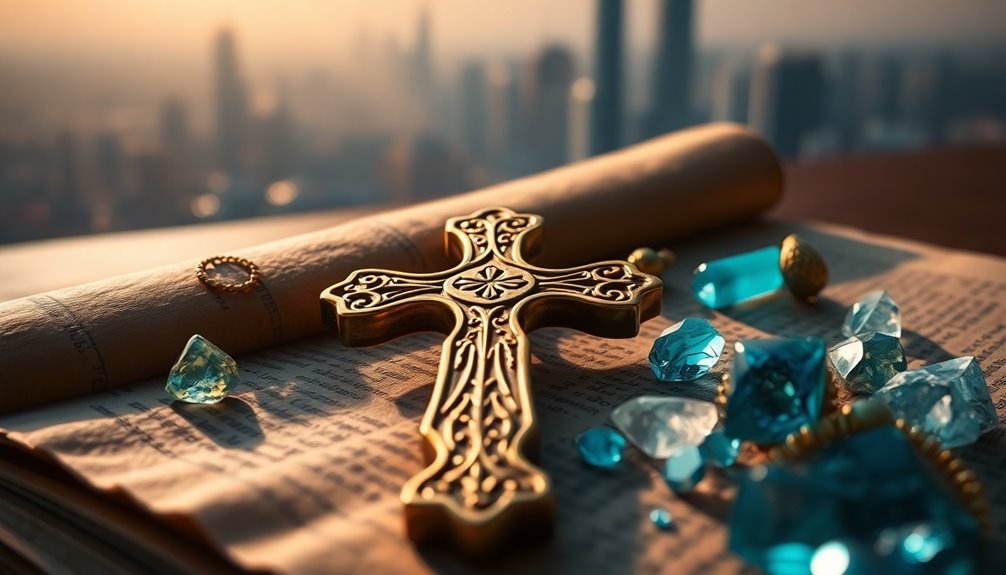
Embodying a rich tapestry of meanings, the Ankh has evolved in modern times, embraced by individuals seeking a deeper connection to life and spirituality. As a powerful symbol of transformation, it resonates with those on their journey of personal growth.
You might find the Ankh appearing in popular jewelry designs or tattoos, acting as a reminder of your connection to ancient Egyptian heritage and the eternal nature of the soul.
In contemporary spiritual practices, the Ankh serves as a focal point during meditation and ritual work. When you incorporate it into your routines, you can reflect on essential existential themes such as life, death, and rebirth.
Coptic Christians also adopt the Ankh, merging ancient symbolism with their modern faith expressions.
Its distinctive circular shape often evokes thoughts of a mirror or womb, encouraging introspection and deeper contemplation. By engaging with the Ankh, you can access insights that promote balance and understanding in your life.
Ultimately, this emblem invites you to explore the profound connections between your existence, spiritual journey, and the cycles of transformation inherent in life.
Connecting With the Ankh in Practice

Connecting with the Ankh in practice offers a profound way to tap into the energies of life, death, and rebirth.
This ancient symbol, known as the Key of Life, can enrich your spiritual journey and deepen your understanding of the eternal cycle of life.
Here are four ways to incorporate the ankh into your personal practices:
- Wear it as a Talisman: Donning the ankh can enhance your connection to life energy and provide protection against negativity.
- Create a Sacred Space: Set up a personal altar featuring the ankh to honor life, set intentions, and engage in daily meditation and spiritual reflection.
- Utilize in Rituals: Incorporate the ankh during significant life changes—such as births or personal transformations—to amplify the healing and significance of these moments.
- Express through Art: Draw or tattoo the ankh as a creative expression of your connection to ancient wisdom and personal growth.
Frequently Asked Questions
What Does the Ancient Egypt Cross Mean?
The ancient Egyptian cross, known as the Ankh, symbolizes life and immortality.
You'll see its T-shaped design topped with a loop, representing the union of physical and spiritual domains.
This powerful symbol often appears in the hands of deities, signifying its importance in granting life and safe passage to the afterlife.
What Is the Egyptian Symbol for Transformation?
The Ankh is like a key that opens the door to transformation. This ancient Egyptian symbol embodies the eternal cycle of life, death, and rebirth.
It represents not just physical existence but also the journey to the afterlife. When you embrace the Ankh, you tap into the power of creation and fertility, reminding you that transformation is a continuous process, merging the spiritual and physical domains into a harmonious existence.
What Does the Egyptian Ankh Mean Spiritually?
The Egyptian Ankh spiritually represents eternal life and the interconnectedness of existence.
When you embrace its symbolism, you acknowledge the balance between life and death, as well as masculine and feminine energies.
This ancient symbol serves as a reminder of the life-giving energy flowing through the universe.
What Is the Egyptian Key of Life?
Think of the Egyptian Key of Life as a bridge connecting you to the essence of existence.
This ancient symbol, known as the Ankh, represents life, immortality, and the eternal cycle that binds us all.
With its looped top, it signifies the union of heaven and earth, inviting you to embrace your spiritual journey.
Conclusion
In exploring the ankh's rich symbolism, you discover a powerful tool for transformation and connection to ancient wisdom. Did you know that over 80% of people who incorporate symbols like the ankh into their spiritual practices report feeling a deeper sense of purpose? By embracing the ankh, you not only honor its historical significance but also invite its transformative energy into your life. So, why not take a moment to connect with this ancient key and reveal your own reality?
